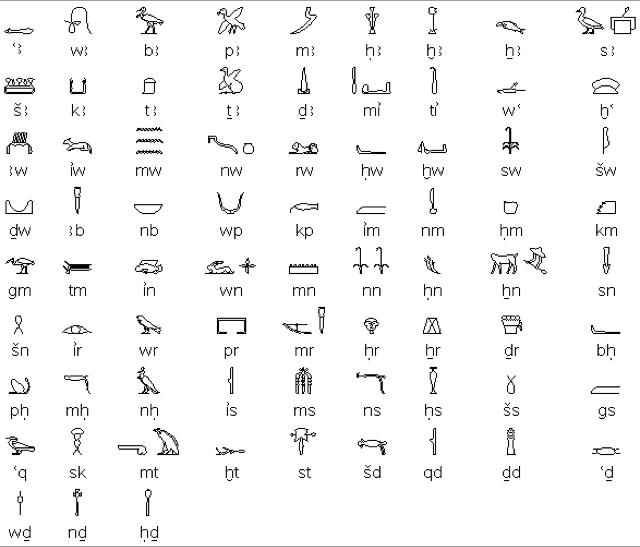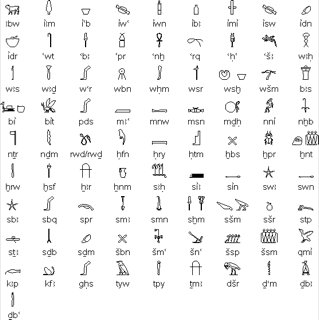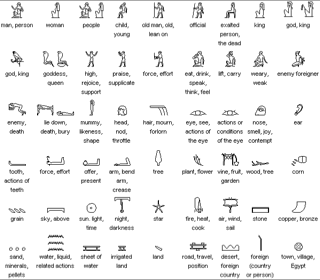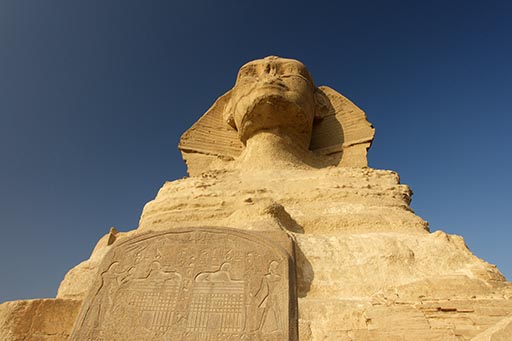

Hieroglyphs are the formal, written language of ancient Egypt.
Amazingly the written Egyptian language of hieroglyphic script seems to have popped up nearly fully formed 5,000 years ago. Slowly the language evolved over 3,000 years and developed several off-shoots. In addition to the standard, formal hieroglyphs, there was hieratic, a priestly cursive form, demotic, a cursive version used in daily life, and finally coptic, which was a version of the egyption language written in the greek alphabet.
Cartouches were always written using the formal hieroglyph characters which are described below.
The ancient egyptians used an alphabet with the characters representing sounds, just like "A", "B", "C" do do today for us. We call these graphical characters "glyphs". Ocassionally, a glyph will represent an actual thing, rather than a sound, but in these cases the glyph is a special "determinative" glyph (see below) or is marked off to let you know. The most common glyphs seen in inscriptions represent a single sound and these single sound glyphs are ofter refered to as the hieroglyphic alphabet:
Some of these sounds do not have true representation in American English phonetics. For example, the vulture (first glyph) has a sound somewhat similar to "ahh" but is really a stop like the middle of "uh-oh". However, remember that you don't need to pronounce the words and names you read. A few sounds can be represented by more than one glyph, for example the "y" sound can be drawn by a pair of reeds or a pair of slashes. It is thought to choice was made by what looked best in the inscription.
Next are some glyphs that represent two sounds. For example the duck in the top row, right side is very frequently paired with a sun disk and is found adjacent to king's names in cartouches. It is the sound "S-ah" and with the sun disk glyph "R-a" is the phrase "Sa Ra" meaning Son of Ra, the sun god.



